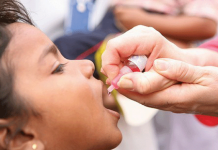Staff Report
ISLAMABAD: Coordinator to Prime Minister on Climate Change, Romina Khurshid Alam said that although Pakistan ranks at the lowest among the countries facing mounting risk of human uptake of microplastics through various food and non-food sources, the present government remains committed and taking all-out measures in collaboration with all provincial governments for tackling the menace of the plastic to protect public health and the environment from adverse impacts of the plastic pollution.
“Managing plastics throughout their product life-cycle and reducing the use of plastics, when possible, to move towards a more sustainable plastics economy. is challenging but critical to mitigate the accumulation of microplastics in the environment and their uptake by humans through various organisms like fish, mussels and oysters,” the PM’s climate aide said in a press statement issued on Sunday from the climate change and environmental coordination ministry.
In Pakistan each person inhales 31 in 1,000 plastic particles per day whereas the per capita dietary intake of microplastics in the country is around 31 milligram per day, according to a recent study on ‘Microplastic Human Dietary Uptake published last month (May 2024) in the Environmental Science & Technology research journal of global repute.
The uptake of microplastics refers to the process by which organisms, particularly aquatic organisms, ingest or absorb tiny plastic particles from their environment. The microplastics are small plastic fragments less than 5 millimeters in size, either manufactured at that size (primary microplastics) or resulting from the breakdown of larger plastic items (secondary microplastics).
Found in industrial waste and beauty products or may form during the degradation of larger pieces of plastic waste, the presence of microplastics in various ecosystems has now raised concerns among the environmentalists and health specialists globally about their long-term detrimental consequences on biodiversity, ecosystem function and human health.
“Various studies have concluded that leaching from our plastic water bottles, knives and dermatologic products to enter our bodies, human uptake of the microplastics serious health issues such as endocrine disruption, weight gain, insulin resistance, decreased reproductive health, and cancer, said PM’s climate aide.
The aide Romina Khurshid Alam, who is leading national anti-plastic campaign in support with provincial governments, industrial and corporate sectors, also highlighted that microplastics are now globally a growing environmental and public health concern, as they are detected extensively in freshwater and marine environments, ingested, absorbed or consumed as food by organisms, and then enter the human body.
Industrial development drives this environmental burden caused by microplastic formation and human uptake by elevating plastic pollution levels and shaping the domestic dietary structure, she added.
Referring to the findings of the study mentioned above, the PM’s climate aide Romina Khurshid Alam said that it was worrying to note that airborne and dietary microplastic human uptake has increased over 6-fold globally, causing adverse risks to the human health and environmental sustainability.
The first-ever global study, carried out by scientists from Cornell University, based in Ithaca, New York, examined data from around the world to determine which countries had the highest exposure to microplastics through different methods of ingestion.
They mapped the microplastic human uptake across 109 global countries including Pakistan on five continents from 1990 to 2018, which revealed that 57% of plastic particles in foods are mainly from aquatic sources.
While underscoring the vast scale of plastic pollution across global countries, the study particularly focuses on the world’s major coastlines that are affected by plastic pollution that affects the United Nations’ Sustainable Development Goals (SDGs): SDG 6 (Clean Water and Sanitation), SDG 14 (Life Below Water), and SDG 15 (Life on Land).
Malaysia ranks at the highest among top 20 countries facing growing risk of microplastic human uptake, followed by Indonesia, Egypt, Philippines, Vietnam, Laos, Thailand, Cambodia, Ghana, Congo, Myanmar, China, Gabon, Tunisia, Republic of Côte d’Ivoire, Angola, Sri Lanka, Bangladesh, South Korea and Nigeri.
According to details of the study findings, Southeast Asian countries such as Indonesia, Malaysia and the Philippines top the global per capita list of dietary uptakes of microplastics, while China, Mongolia and the United Kingdom top the list of countries that breathe the most microplastics, according to a new study by Cornell researchers mapping microplastic uptake across 109 countries.
Romina Khurshid Alam suggested that tackling microplastic uptake and potential public health risks, governments in developing and industrialised countries in Asia, Europe, Africa and North and South America should join hands against the global menace of microplastic pollution, urging them to roll out policy measures backed by incentives for the removal of free plastic debris from freshwater and saltwater environments through advanced water treatment and effective solid waste management practices.
“Removing most of aquatic plastic debris by water management for surface water quality control in freshwater watersheds, wetlands, and lakes, as well as ocean cleanups or effective solid waste management, could significantly mitigate human microplastic exposure by 55%,” PM’s climate aide suggested, adding, “these measures can help protect water quality and safeguard public health in 109 countries across five continents along major coastlines.”
Romina Khurshid Alam said that various studies have also concluded that the microplastic uptake globally in fact originates from high seafood consumption. “However, replacing the single-use polyolefin plastic material with innovative, highly degradable alternatives, for example edible biobased materials, could help contain the release of microplastics from packaging materials, especially in beverages,” she added.




